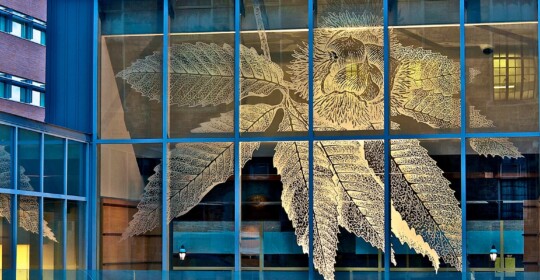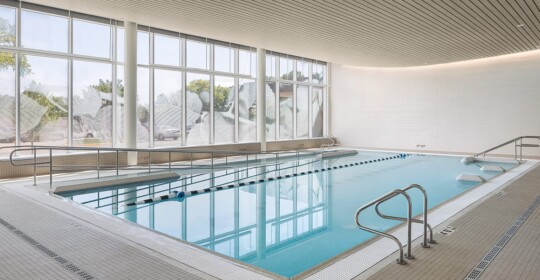Lenexa Library
Lenexa, Kansas is committed to its future with successive master plans like Vision 2040. The new city center includes a library designed by Holzman Moss Bottino Architecture, featuring a unique “ribbon railing” by Kevin Morin and Amanda Rienth. This railing serves both aesthetic and functional roles, integrating interior and exterior spaces with LED lighting for visibility.
Category: Exterior
Technique: Digitally Printed Glass
Architect: Holzman Moss Bottino Architects
Pattern: Letters 2
Case Study: Lenexa Library
Photography: Chris Cooper


